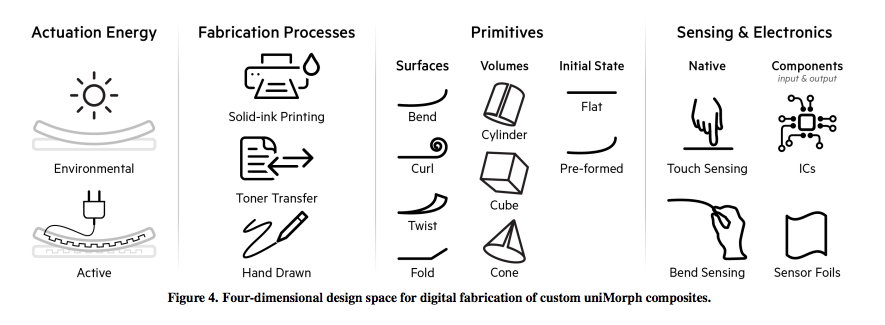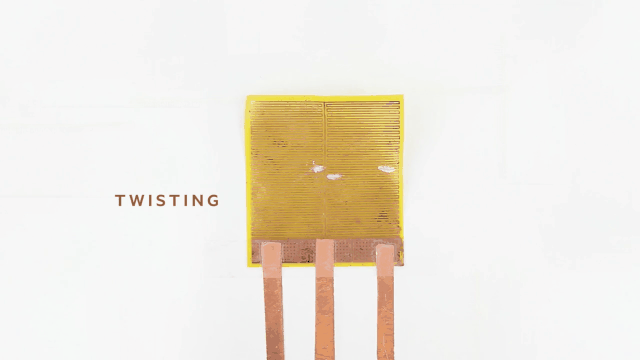An iPad case that waves almost imperceptibly when you get an email. Screens that curl up when you leave a room, and ones that unfurl like flowers when you come back. These sound like William Gibson-esque technologies from the future, but they’re actually not so far off.
A new video from MIT’s Tangible Media Group — which deals with soft, tactile and pneumatic interfaces — shows of a technology called uniMorph, a process for quickly fabricating inexpensive, thin-film interfaces that can change shapes when a current is applied.
The concept behind uniMorph has actually been around for a while, often called a “unimorph actuator.” We’ve seen the same basic principle used by robotics engineers and by architects working on buildings that adapt to sunlight and heat, but the Tangible Media Group is applying it to interface design, a process described in a paper the group will present next month at the ACM Symposium on User Interface Software and Technology.
Here’s how it works. The interface’s base is made up of two thin layers of material. On the top is Kapton, a Dupont-made material that’s very good at remaining stable. Below it is a layer of the plastic polyethylene, which of course is very bad at remaining static when it’s hot.
When the layered materials are heated up either using a third layer of copper conduits or just exposure to the sun, they expand at different rates. This is called “passive actuation.” The bottom layer pulls up the edges of the top as it expands, creating a curling effect due to the tension.

The Tangible Media Group has taken that simple concept and iterated with it, adding heat at specific places to create different types of movement, from curling to twisting, and adding flat pieces of material in specific places to create different shapes, like boxes and cones.

On top, they have added electronic components, creating prototypes like an iPad cove that curls when a notification comes in, and a read light that bends into place over your book when you turn on its LEDs. Just as importantly, the lab details how simple it is to make these interfaces using a standard printer, hydrogen peroxide, copper etching, and hydrochloric acid, as well as the plastic and Kapton veneers.
It’s a simple idea that, combined with some slick prototyping work and a clever fabrication process, has a surprisingly huge range of applications. We’ll likely hear more about it next month when the group presents at the ACM Symposium on UI and Tech, but for now, let’s imagine screens that curl and devices that move rather than ring.
